Roerich’s Himalayan Adventures: The Untold Saga
Blogs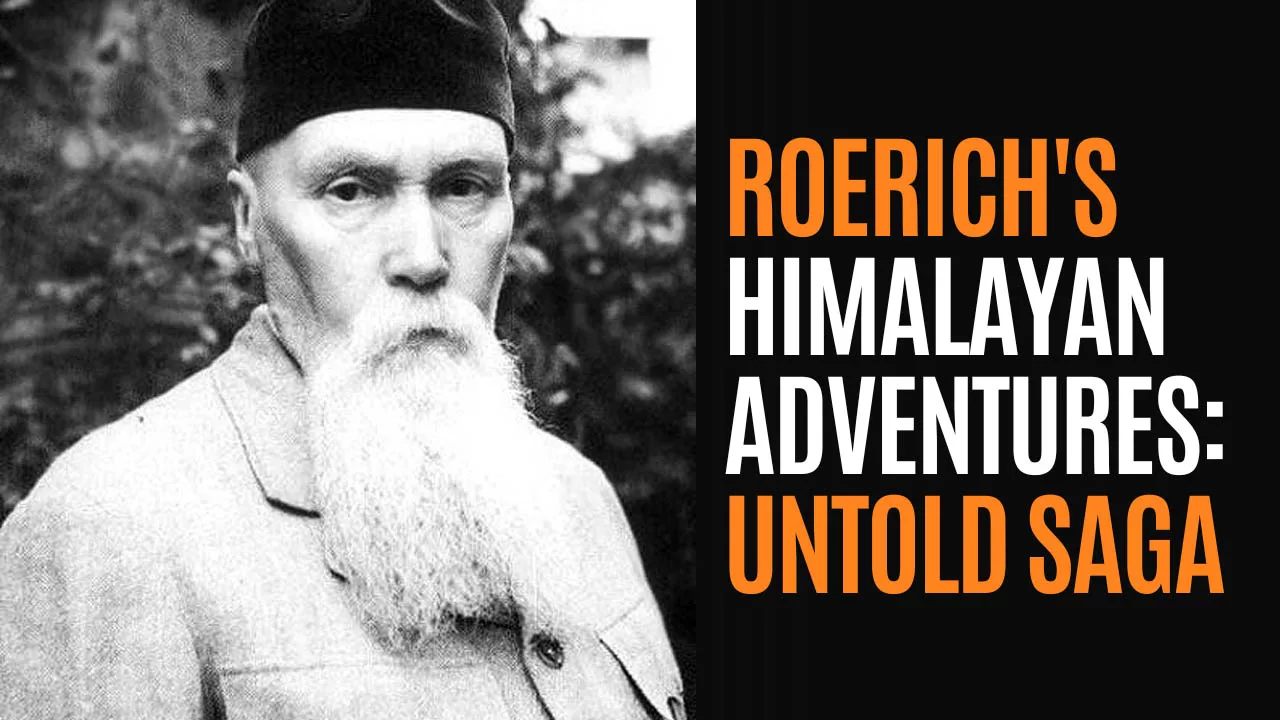
Nomadic Beginnings: A Canvas of Childhood (1874–1889)
In the tapestry of time, where threads of art, mysticism, and exploration interweaved, Nicholas Roerich emerged as a luminary whose life echoed through the ages. Born in 1874 amidst the vast landscapes of Russia, young Roerich’s childhood was marked by the nomadic rhythm of his family’s travels. This early exposure to diverse cultures and landscapes would have a profound influence on his future endeavors.

Theosophy’s Beacon: A Spiritual Awakening (1889–1909)
The late 19th century bore witness to the rise of spiritual movements, and Roerich found himself drawn to the enigmatic world of Theosophy. Madame Blavatsky, a co-founder of the Theosophical Society in 1875, cast a guiding light on his spiritual path. As the 20th century dawned, Roerich’s journey became intertwined with other influential figures in Theosophy—Colonel Henry Steel Olcott and Annie Besant.

Mystical Threads: Theosophy Unveiled (1909–1920)
In 1909, a pivotal moment unfolded as Charles Leadbeater and Annie Besant discovered a young boy named Jiddu Krishnamurti. Theosophists believed him to be a potential “World Teacher.” The currents of Theosophy flowed strongly in Roerich’s veins; however, the ensuing decades saw Krishnamurti diverge from Theosophical teachings, forging his spiritual path. Roerich, however, continued to navigate the realms of mysticism and art, balancing his spiritual pursuits with a deep commitment to his artistic endeavors.
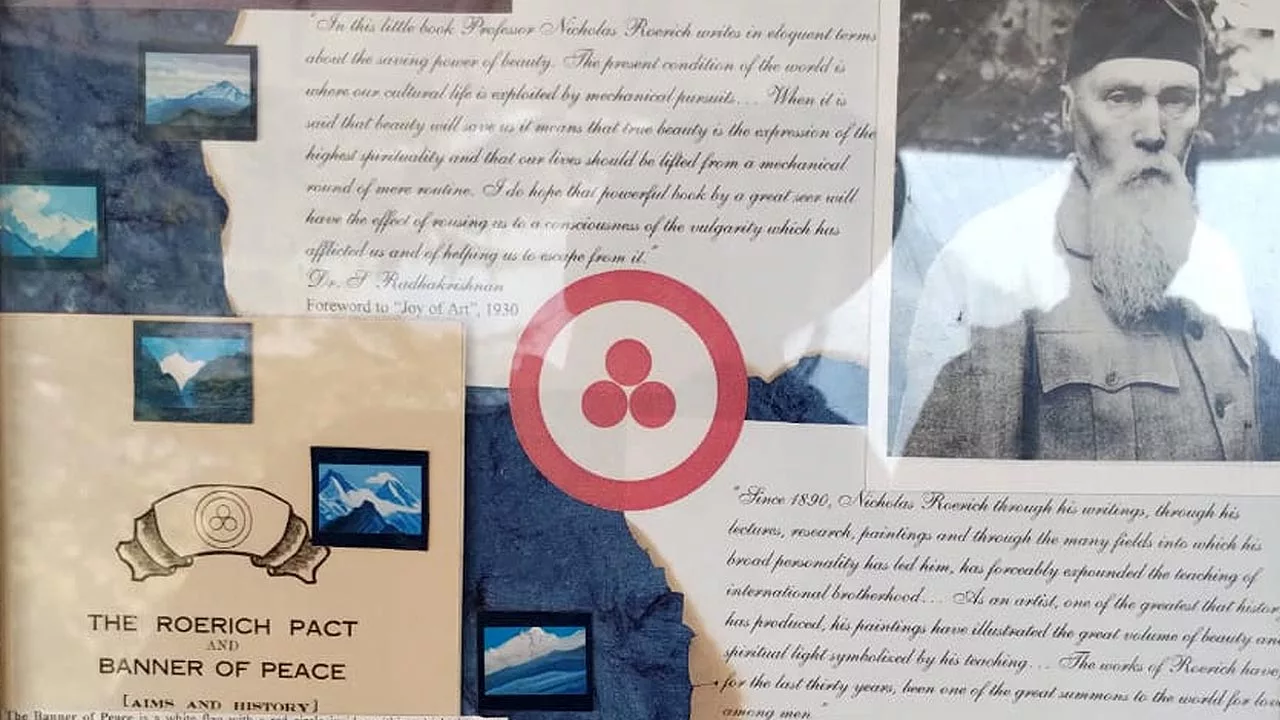
Diplomacy and Preservation: The Roerich Pact (1921–1935)
The Roerich canvas expanded beyond artistry into the realm of diplomacy. In the aftermath of World War I, he played a pivotal role in the creation of the Roerich Pact—an international treaty aimed at protecting cultural heritage during times of conflict. The stroke of his pen in diplomatic circles resonated with the strokes of his brush on canvas, each contributing to a legacy of cultural preservation.

Himalayan Symphony: Expeditions and Spiritual Heights (1923–1934)
The 1920s marked a significant chapter in Roerich’s life—a chapter written on the sacred scrolls of the Himalayas. The Kullu Valley in Himachal Pradesh witnessed his footsteps, and from 1923 to 1928. Nicholas Roerich embarked on the Himalayan Expedition, a daring quest that echoed the ancient sages who sought wisdom in the towering peaks. As he ventured into the Altai Mountains from 1926 to 1928 and trekked through Sikkim and Central Asia, Roerich unveiled the secrets of ancient civilizations buried beneath the snow and sands.
Within the vast narrative of Nicholas Roerich’s life, the elusive kingdom of Shambhala emerged as a mystical thread, intricately woven into the fabric of his spiritual odyssey. Shambhala, a mythical realm that beckoned from the heart of the Himalayas, held a sacred place in Roerich’s consciousness. His quest for Shambhala transcended the geographical landscapes he traversed, becoming a spiritual pilgrimage echoing the ancient tales of Tibetan and Himalayan traditions.

Banner of Peace: Shambhala’s Whisper on Himalayan Peaks (1935–1947)
Roerich’s fascination with Shambhala was not merely an artistic motif but a profound philosophical pursuit. In the esoteric corridors of Theosophy, Shambhala represented a realm of spiritual enlightenment, a sanctuary where the wisdom of the ages was said to be preserved. The Banner of Peace, with its echoes of Shambhalic ideals, fluttered atop the Himalayan peaks as a symbol of Roerich’s commitment to peace, culture, and the preservation of ancient wisdom.
As Roerich ventured deeper into the Himalayas during his expeditions, the quest for Shambhala became a guiding light. Through the valleys of Kullu, the towering peaks of the Altai Mountains, and the sacred grounds of Sikkim, he sought the ethereal kingdom, drawing inspiration for his art and philosophy from the very essence of Shambhala. In the silence of these ancient landscapes, Roerich believed he could uncover the spiritual truths that Shambhala held, and his artistic creations became portals to this mystical realm.
Shambhala, in Roerich’s vision, was not just a physical destination but a metaphor for the inner journey—a path toward self-discovery and enlightenment. The tales of Morya and Koot Hoomi, spiritual entities associated with Theosophy, whispered through the Himalayan winds, connecting Roerich to the ancient lineage of seekers who, like him, yearned to unveil the mysteries of Shambhala.
In the crucible of the Himalayas, Roerich’s spiritual quest reached its zenith. The Banner of Peace, or Pax Cultura, became the emblem of his fervent belief in promoting peace and protecting cultural heritage. This symbol fluttered in the mountain winds, bearing witness to his commitment to a higher ideal.
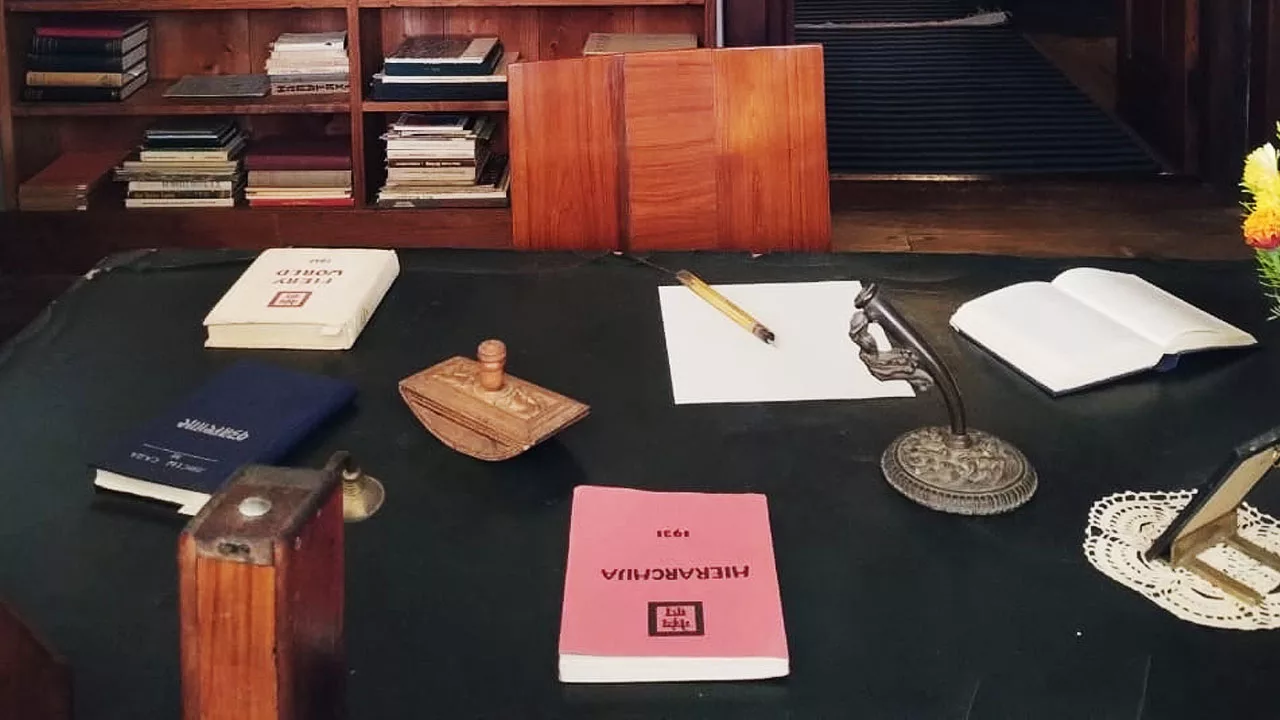
Legacy Unveiled: A Celestial Homage and The Roerich Case (1947–Present)
Roerich’s life was not devoid of challenges. The legal controversy surrounding the ownership of his artworks, known as the Roerich Case, cast a shadow over his posthumous legacy. Yet, the lunar crater named in his honor on the far side of the Moon remains a celestial tribute to his contributions to art and exploration.
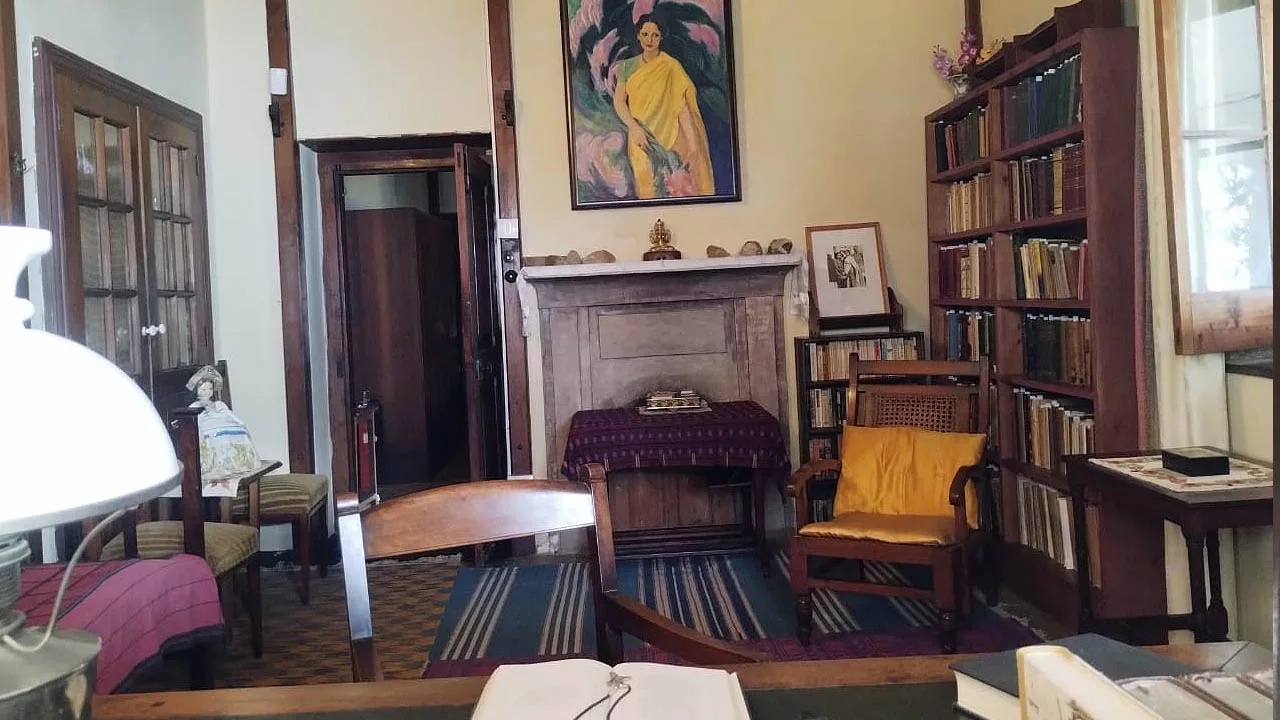
Final Chapters: Agni Yoga and Continuation (1947–Present)
In the final chapters of his life, Roerich, along with his wife Helena, delved into the development of Agni Yoga—a spiritual philosophy emphasizing inner transformation. His family, bound by the threads of art and intellect, continued to carry the torch of his creative legacy.
Nicholas Roerich’s life, a symphony of art, spirituality, and exploration, echoes through time, resonating with those who seek the sublime. As the Himalayan winds carry whispers of ancient wisdom, Roerich stands as a sentinel on the threshold of worlds, his life a testament to the enduring power of the human spirit in its quest for meaning and enlightenment.

Symphony of Life: Roerich’s Eternal Echo (Present and Beyond)
In the grand tapestry of Nicholas Roerich’s life, Shambhala became a symbol of transcendence. A beacon that illuminated his spiritual pursuits, artistic creations, and explorations. As the pages of time turn, Roerich’s quest for Shambhala continues to resonate, inviting those who follow in his footsteps to embark on their journey into the mystical realms of the heart and spirit.
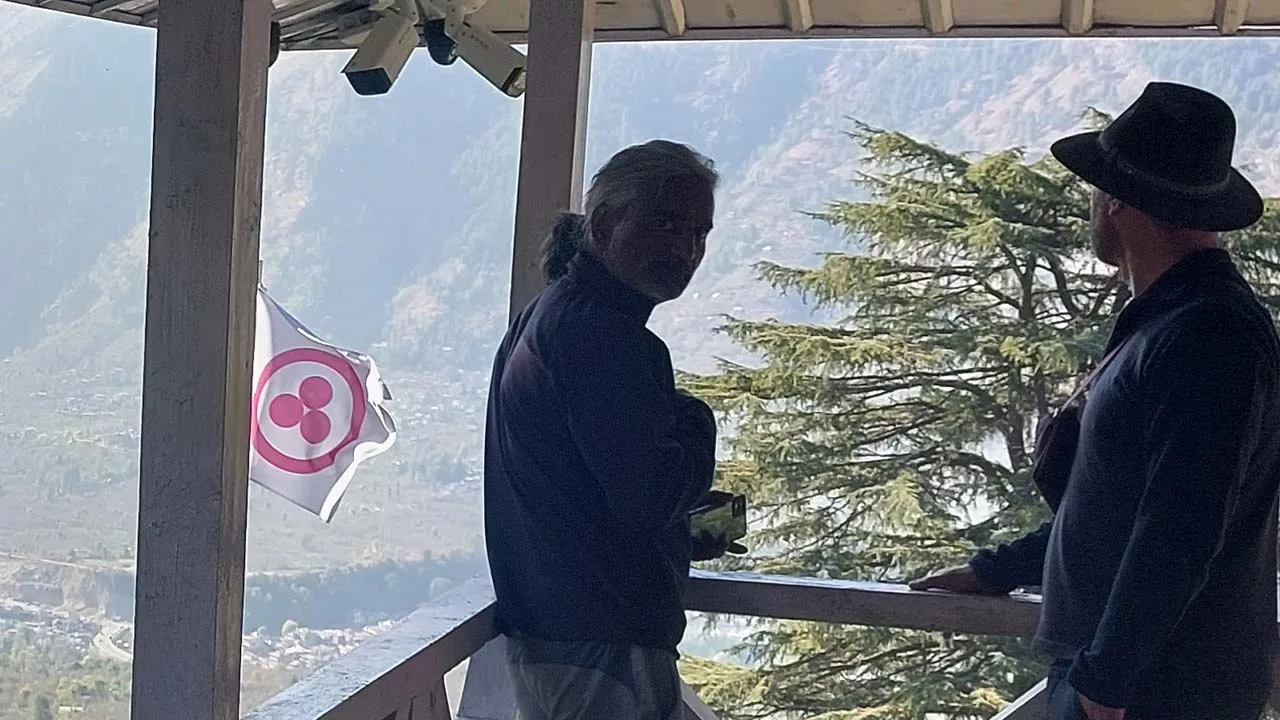
Traveling to Nagar Roerich’s from Manali:
For those eager to follow in the footsteps of Nicholas Roerich and explore the legacy he left in Nagar, the journey from Manali is an adventure in itself.
- From Manali, embark on the left-bank road towards Kullu and journey northeast through the enchanting valleys and winding roads. After approximately 20 kilometers, the journey reaches Nagar, where the Roerich Art Gallery awaits.
The route winds through the breathtaking landscapes of Himachal Pradesh, offering panoramic views of lush valleys and snow-capped peaks.
Travelers can hire local transport or drive independently to immerse themselves in the natural beauty that captivated Roerich during his Himalayan sojourns. Upon arrival in Nagar, visitors can explore the Roerich Estate, a serene haven that once echoed the artist’s creativity and spiritual contemplation. The estate houses the Roerich Gallery, showcasing a collection of Roerich’s masterpieces.
Navigating through the narrow lanes of Nagar, travelers will discover the quaint charm of this Himalayan town, where each corner holds whispers of Roerich’s profound connection to the mountains. The journey from Manali to Nagar encapsulates not only the physical distance but also the spiritual and artistic essence that defined Nicholas Roerich’s extraordinary life.
Recommended for You:

